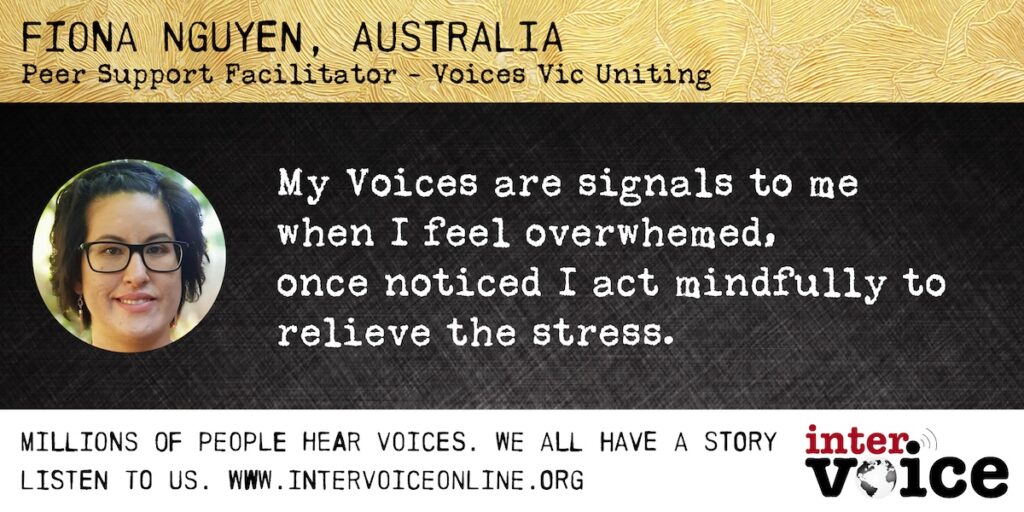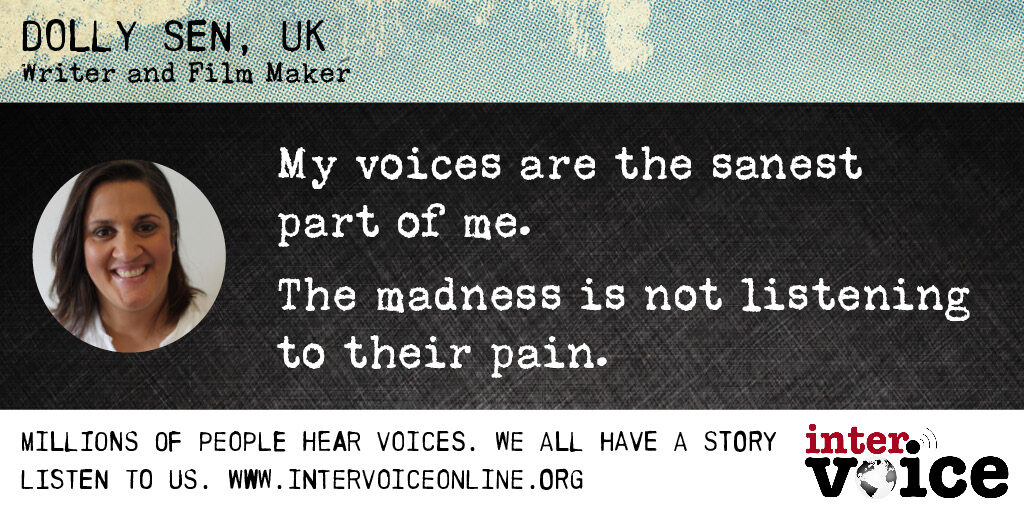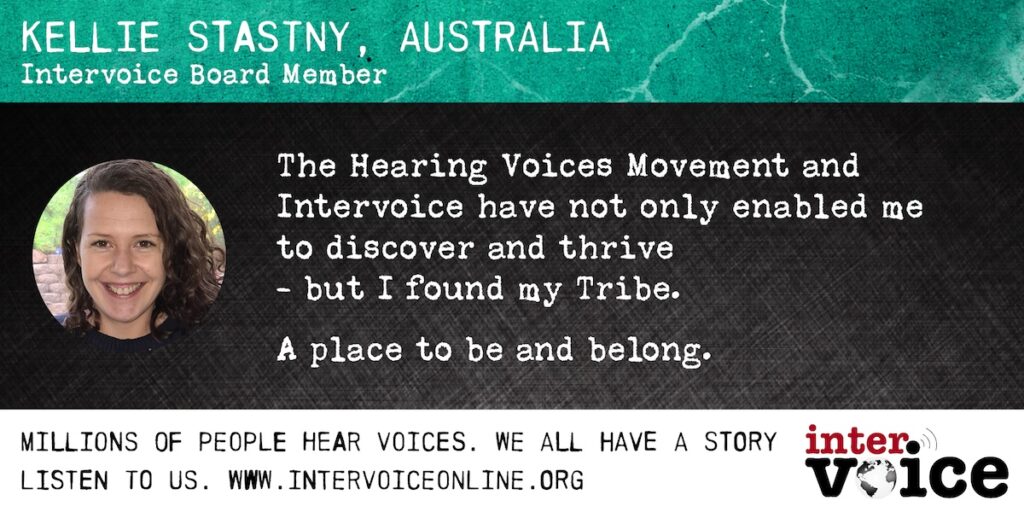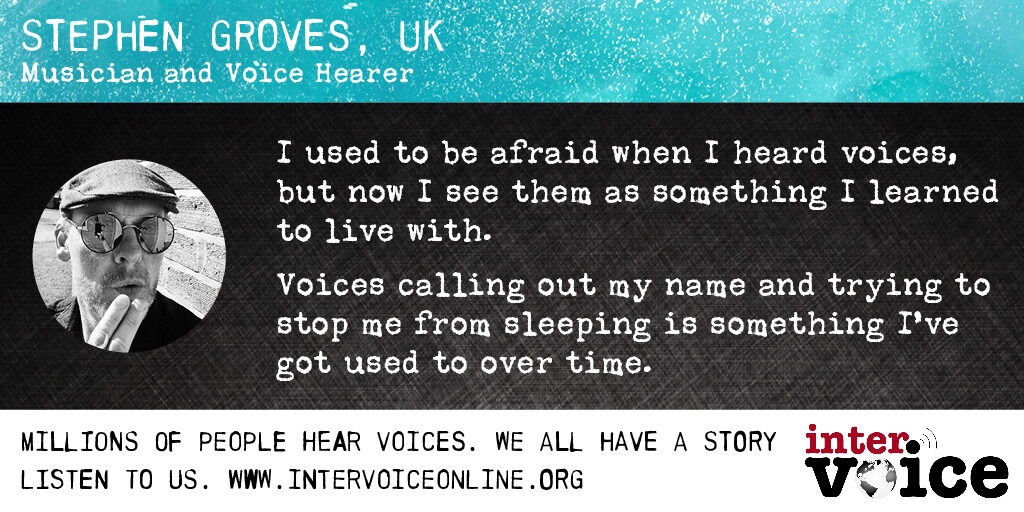by Dirk Corstens, Eleanor Longden and Rufus May
1. Why Talk With Challenging Voices
Many people who hear challenging voices have found that a turning point in learning to cope with this experience has been finding different ways of talking with and understanding their voices.
Learning to understand the motives of your voices and different ways of talking with them can help the relationship to change between the voice hearer and the voices. Techniques derived from various psychological and dramatic traditions (e.g. Gestalt, Voice Dialogue, Transactional Analysis, Psychodrama) have used chairs to act out different roles and relationships in order to help people resolve conflicts and reclaim power in their lives.
For the last ten years, a growing number of individuals have adapted this method to use with voice-hearing. We came together to write this so that others may try the technique as an aid for coping with challenging voices.
Many people engage and speak with their voices, and stances can vary from:
argumentative:
Voice: “You’re a failure”
Voice hearer: “No I’m not, go away”To challenging:
Voice: “These people don’t like you”
Voice hearer: “Haven’t you got anything better to say?”To submissive:
Voice: “You shouldn’t go out tonight”
Voice hearer: “All right then”
Many voice hearers experience their voices as powerful, as if they have to obey to everything they say. That the voices tell the ultimate truth. Voices can also threaten with “punishment” to the voice hearer or beloved others.
In our approach, that is derived from “Voice Dialogue”, we try to explore the motives of the voices so that the voice hearer can find new strategies to cope with their voices. It can create a more autonomous position in which the voice hearer can make her or his own choices. Some voices even can become supportive.
Why is Voice Dialogue appropriate for voice hearers?
It is not oriented towards pathology nor is it focused upon discovering what is wrong. It offers a neutral but strong attitude to work with voices – acceptance is the core of the work.
It offers a “positive” model for the existence of voices.
It helps to built up more awareness – some distance towards the voices – and a more fruitful relationship between voices and voice hearer.
2. Basic Principles
The basic principle is that we are not trying to change the voices; we are trying to explore their relationship with the person. Doing this work will help the individual gain a different perspective on what the voices are trying to say.
If the voice hearer can develop a more strong attitude the voices are able to change. Our aim is not to get rid of the voices but help the person take back more control in the relationship they have with the voices.
In the Voice Dialogue model everybody consists of different selves or subpersonalities. Each with its own way of perceiving the world, each with its own personal history, physical characteristics, emotional and physical reactions, and opinions on how we should run our lives. These selves serve to adapt to difficult situations. The dominant selves want to protect us from being hurt, want us to succeed in life, expect us to do what is asked by our environment. This adaptation we learn early in life. Our selves stick to what is learned to survive. Our dominant selves push away our more vulnerable parts and these, what is called “disowned” selves become hidden and can play a significant role anymore. The selves are organised in opposites.
An example. When you are brought up with the rule: “Children that ask will be forgotten” and this is also practiced in daily life, than you develop a dominant or primary self that wants strongly to please everybody. A self that focuses at doing exactly what you think will be necessary for being liked. The opposite self, e.g. asking questions that can eventually bother other people, asking questions that can be neglected or as a person you can become rejected, will be pushed away by this strong “Pleaser”-self.
The “Pleaser” doesn’t want you to take the risk of rejection.
The person with the selves organised like this doesn’t dare to ask questions, is always afraid of being rejected when she or he asks questions. This person doesn’t have a choice anymore between asking something they need or neglecting what their own needs are. The person has adapted to the rule that was prevalent in history.
Originally the organisation of the selves was beneficial to cope with situations in daily life. But in life circumstances change and these selves stay fixated in their originally adaptive roles. So later in life, in other situations, with other people and other needs, the organisation of the selves can prevent you from adaptation. Mostly we are not aware of that.
In the practice of Voice Dialogue, what is called a facilitator, not a “therapist”, helps you to explore these different selves by asking these selves, one after another, simple questions.
The facilitator asks you to concentrate on a self and go into the energy of this particular self in a different place than where you started in the room. So both the facilitator and yourself know and experience that you talk from a different part. This emanating self is questioned.
Questions that are asked are like:
- Nice to meet you, can you tell me your name?
- How old are you?
- How do you look like?
- How do you feel at this moment?
- How long are you with Jacob (the person who is facilitated is called Jacob)?
- Do you remember when you came in the life of Jacob?
- What happened then?
- What are you caring for?
- Do you have a difficult job?
- Does Jacob know you are there?
- Does he like you?
- Does he accept your help?
- Do you get space to do your job?
- Do the other selves know you?
- Do they collaborate with you?
- What would happen in the life of Jacob if you weren’t there?
- What would you like Jacob would improve in his life?
- Etc
All these questions make perfectly clear what the function is of this specific self. It is an exiting experience when this self is questioned in such a respectful way. The facilitator elaborates no pressure to change, just expresses her or his curiosity and wanting to acknowledge the presence and individuality of this particular self.
There are no bad or good selves. Although some can have a limiting impact on the life of a person, these selves don’t have all knowledge or capacities to exert in situation they don’t know. They selves are “designed” to prevent rejection or danger and are triggered by what they learned early in life. They’re doing the best they can.
During this questioning the facilitator engages with the particular self in an open and committed way. Compliments are exchanged. The presenting self is growing, becoming more open in an energetic way. The facilitator stays in his curious and acknowledging attitude.
The self experiences this acknowledgement and the facilitator stimulates reflection on its role in the life of the person. The self will express feelings and emotions, like a real person. Special attention is drawn to these emotions, what the self is feeling physically when this self is there. It is encouraged to be there, to express herself.
There will be no discussion, no opposing views from the side of the facilitator. The self is expressing without the limitations of its function or tasks. The energy builds up and after a while decreases. When the most urgent expressions have passed the facilitator asks if the self has some advice for the person, based on what is said. After that the facilitator thanks the self and asks the person to return to the original place where the person started.
Then the person, in this position, is asked to reflect on what happened and how it feels. Mostly people express surprise and that they now understand more about how this aspect of themselves works in daily life. They feel a little bit more distance and closeness together to this part. This self now has become a bit different to the person. In the future they can physically feel when this particular self is active.
Often, when a dominant self has presented itself in this way, a hidden or disowned self will pop up. The same procedure will be followed. Also the physical appearance of this side is very important to focus on, because that will be an anchor for the person to identify this self. When the disowned self will be able to express itself it means that it is no longer hidden and that the dominant and opposite self permitted this pushed away aspect of the person to come on stage. It enriches the person.
After such a repeated scenery, where different selves have presented themselves and the person has reflected on feelings and opinions, the person is asked to stand next to the facilitator who summarizes briefly in a neutral way what he saw and experienced himself.
This helps the person to become aware of the processes that played a role in the scenery. Mostly these facilitation processes have a great impact and automatically work through in daily life in a smooth way.
That is called transformation. The person will know and feel when a certain self is operating and will learn to use it or to lessen its impact in daily life. This process of transformation is predicted and stimulated by the facilitator.
Usually such a session takes one and a half or two hours. Voice Dialogue isn’t repeated too frequently, because of the time these experiences take to ground in daily life. Transformation takes time. Mostly a few sessions are enough to give thorough transformation a chance.
So change is an aim but that is viewed as an autonomous process if the person gets aware of the selves that play important roles in their lives and if the awareness of the aspects that are pushed away, mostly beautiful qualities, increases.












